Reviewing the annual 2023 report from the IQVIA Institute for Human Data Science discussing The Use of Medicines in the U.S. is always a detailed, deep, and insightful dive into the state of prescription drugs. It’s a volume speaking volumes on the current picture of prescribed meds, spending and revenues, health care utilization trends, and a forecast looking out to 2027.
In my read of this year’s review, I see a flashing light for U.S. health care: “Wake up, public health!”
I’ve pulled out a few of the data points that speak to me about population health, prevention and early diagnosis (or lack thereof), and alarm bells on women’s health — notably, young women and girls.
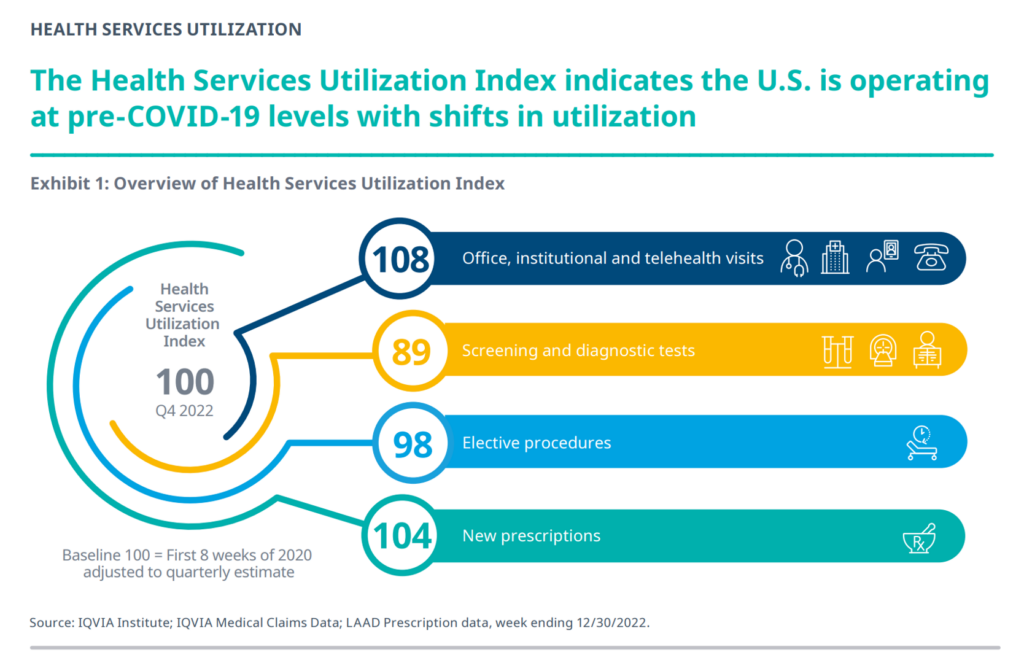
First, we look at the macro picture on health services utilization comparing the end of 2022 with pre-COVID-19 levels. With an Index of 100 for the first 8 weeks of 2020 (that is, the 2 months before COVID-19 emerged in the U.S.), we see an over-indexing of office, institutional and telehealth visits (at 108) and a 104 gauge on new prescriptions.
However, elective procedures haven’t yet reached pre-pandemic utilization (latest read of 98) and for screening and diagnostic tests, underwhelming use at 89 versus the 100 index pre-pandemic.
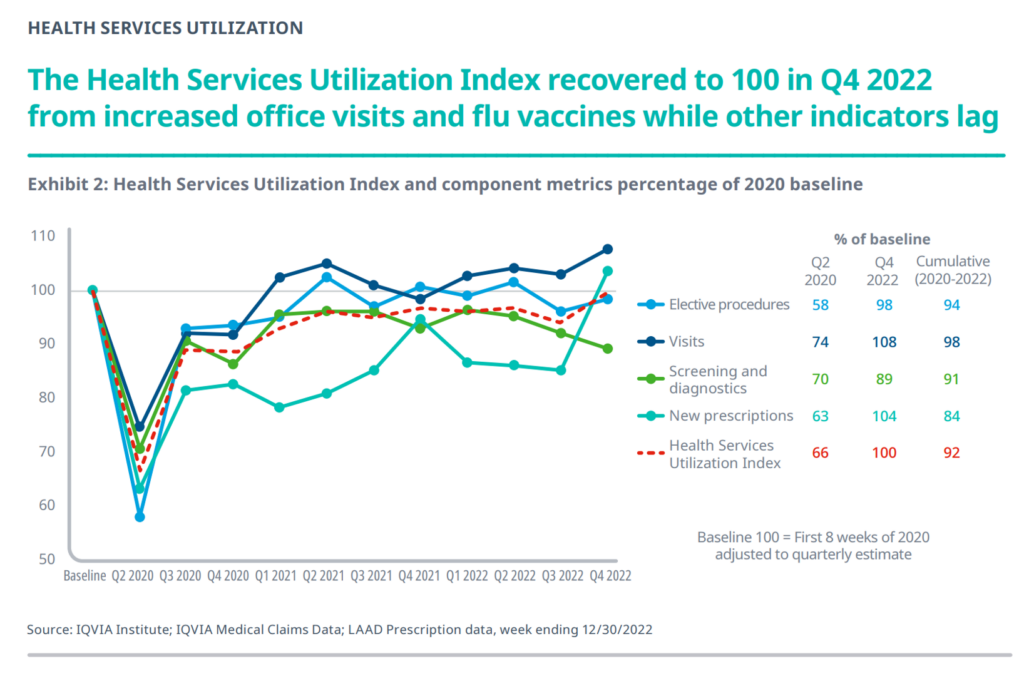
The second graph portrays the same data in greater granularity, illustrating the variability of the four service areas over time comparing Q2 2020 with Q4 2022. Each of the four areas’ utilization increased by the end of 2022 — the good news in terms of overall health services — but you can see the lagging indicators for and gaps for preventive and treatment services. IQVIA attributes this to patients’ avoiding interactions with the health care system.
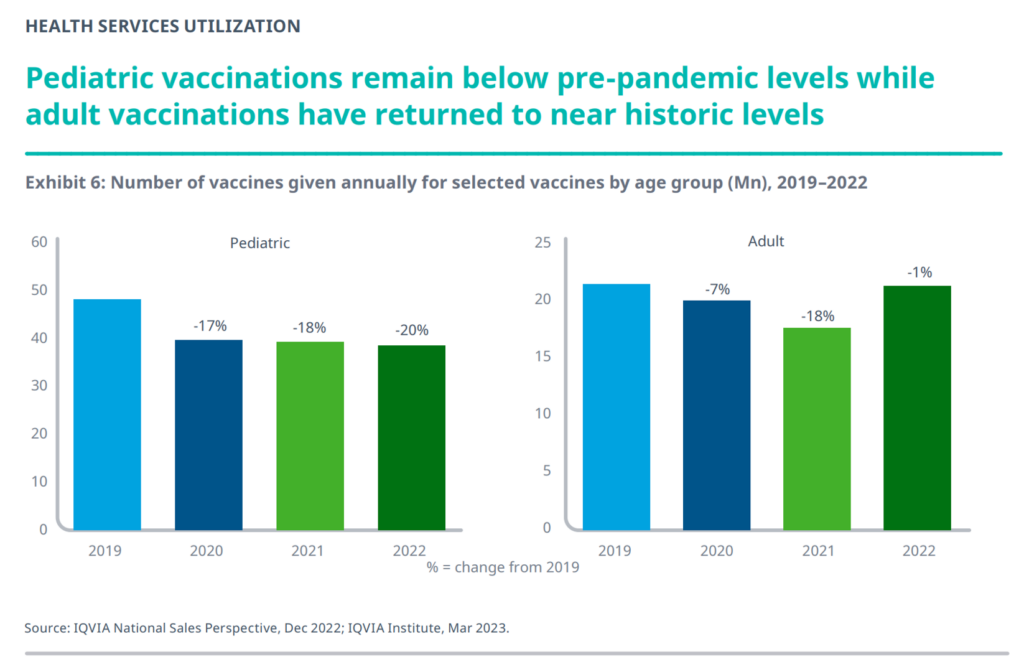
One of the most concerning data points on health service avoidance is the drop in pediatric vaccinations which remain below pre-pandemic levels, IQVIA’s data revealed. Shown here in the third chart, note that adult vaccinations have returned to pre-COVID levels, but immunizations for kids were 20% lower than in 2019.
Here, we call out the 12% increase in the proportion of Americans who say that parents should be able to choose not to vaccinate their children, found in the Kaiser Family Foundation COVID-19 Vaccine Monitor survey from December 2022. 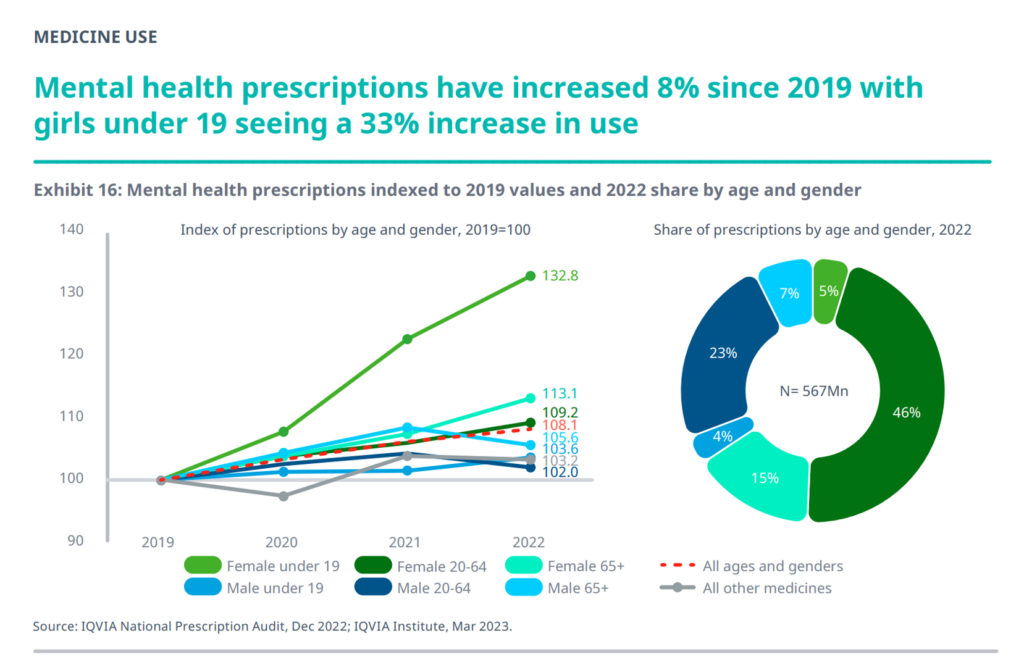
Let’s now shift to the public health crisis in Americans’ mental health, which the pandemic certainly exacerbated. IQVIA’s national prescription data revealed that prescriptions for mental health drugs grew 8% since 2019 — with a 33% rise among girls under 19.
There is another data point in the study on women’s health and prescriptions — for ADHD drugs. Prescriptions for these medicines in women were up 46% from 2018 (compared with men, growing in Rx volume by 26%). Women thus accounted for one-third of ADHD prescriptions as of December 2022.
Health Populi’s Hot Points: Life expectancy in the U.S. has declined in the past couple of years, I’ve been discussing here in Health Populi.
The causes of the rising mortality of Americans, overall, have to do with more than the COVID-19 pandemic. Succinctly put by Dr. Cory Franklin and Dr. Robert Weinstein, “the main causes of the excess deaths are more social than medical.”
![]()
The IQVIA report clearly shows some consumers delaying their return to the healthcare system for screening and diagnosis. Couple this with a growing number of parents avoiding measles, mumps, and rubella immunizations for their kids, detailed in this last chart from Kaiser Family Foundation’s poll fielded at the end of 2022.
Delaying tests and recommended screenings can lead to diagnoses of conditions later in their development, requiring more aggressive treatment, greater medical costs, and potential risks to life (or quality of life-years that remain).
Avoiding vaccinations for MMR, too, can risk a child’s health and well-being: the CDC notes that there were over 1,200 cases of measles in the U.S. in 2019 — the highest number of cases reported in America since 1992 and since the nation declared measles eliminated from the country in the year 2000.
Reading between the lines of the 2023 IQVIA report tells us as much about public health risks as it does medicines use. Thanks to the IQVIA team for their always-useful data that informs us to face up to challenges in our health care communities…


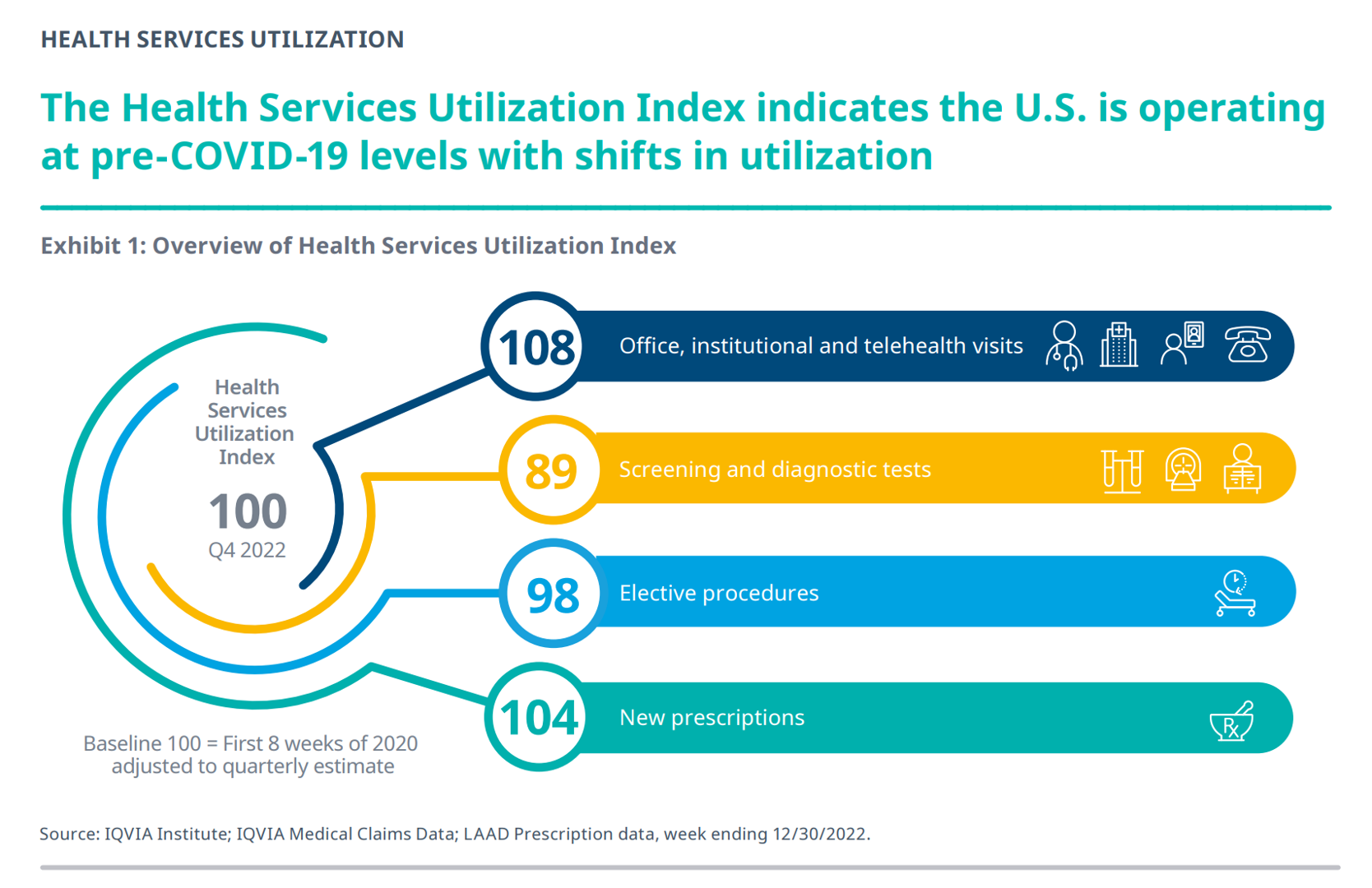


 Interviewed live on BNN Bloomberg (Canada) on the market for GLP-1 drugs for weight loss and their impact on both the health care system and consumer goods and services -- notably, food, nutrition, retail health, gyms, and other sectors.
Interviewed live on BNN Bloomberg (Canada) on the market for GLP-1 drugs for weight loss and their impact on both the health care system and consumer goods and services -- notably, food, nutrition, retail health, gyms, and other sectors. Thank you, Feedspot, for
Thank you, Feedspot, for  As you may know, I have been splitting work- and living-time between the U.S. and the E.U., most recently living in and working from Brussels. In the month of September 2024, I'll be splitting time between London and other parts of the U.K., and Italy where I'll be working with clients on consumer health, self-care and home care focused on food-as-medicine, digital health, business and scenario planning for the future...
As you may know, I have been splitting work- and living-time between the U.S. and the E.U., most recently living in and working from Brussels. In the month of September 2024, I'll be splitting time between London and other parts of the U.K., and Italy where I'll be working with clients on consumer health, self-care and home care focused on food-as-medicine, digital health, business and scenario planning for the future...